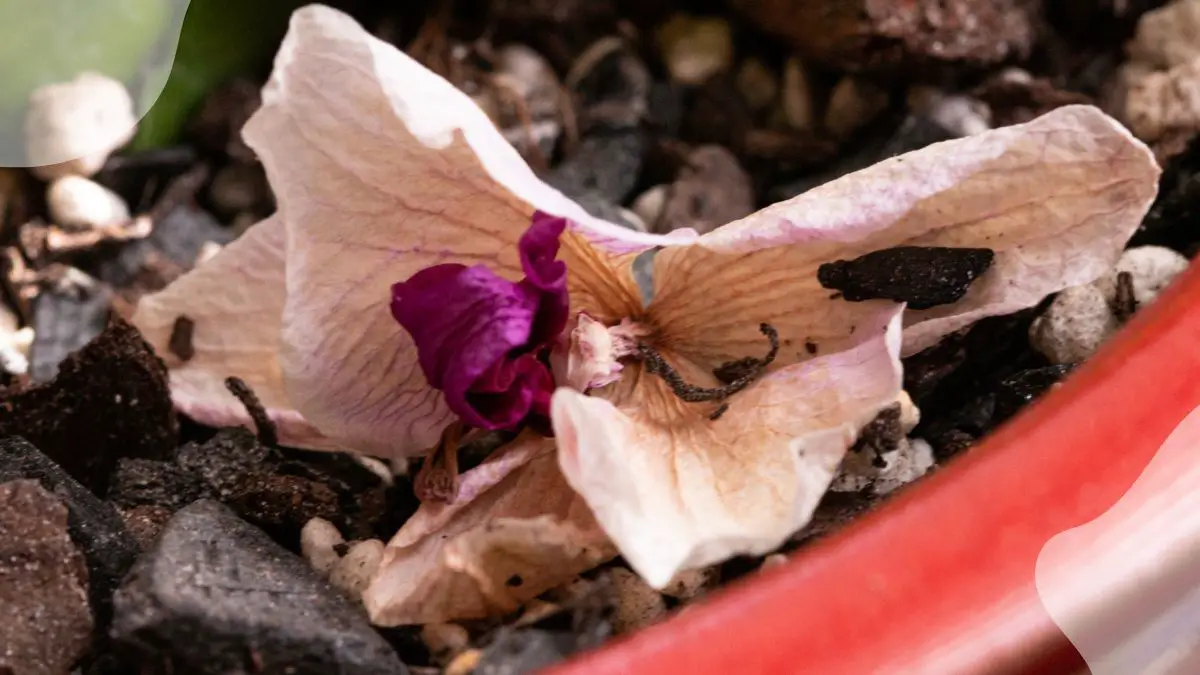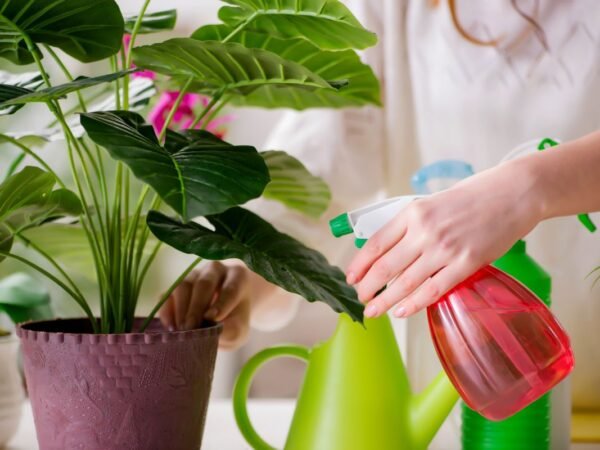Did you know that overwatering is the leading cause of orchid leaves wilting? This surprising statistic often catches many plant enthusiasts off guard. When orchid leaves start to droop and lose their vibrancy, it's crucial to act swiftly to save your beloved plant. Stay tuned to uncover the secrets of maintaining lush and thriving orchids in your indoor garden.
Understanding Orchid Watering Needs
Signs of Watering Issues
Orchid leaves can provide valuable clues about their watering needs. Observe them for wilting, discoloration, or softness, which may signal watering problems. Check for water droplets on leaves, a sign of over-watering, and look for dry, crispy leaves as an indication of under-watering.
Common Causes of Wilting
Environmental factors play a crucial role in orchid health. Understand how humidity levels can impact the well-being of your orchids. Incorrect watering schedules can lead to wilting leaves, so it's essential to consider this aspect. evaluate the influence of light exposure on the wilting of orchid leaves.
Over vs Under Watered Orchids
Distinguishing between over-watered and under-watered orchids is key in maintaining their health. By observing the appearance of the leaves, you can differentiate between the two conditions. Achieving a balance in watering practices is vital to prevent wilting. Learn how to adjust your watering routine to ensure optimal health for your orchids.
Diagnosing Your Orchid's Condition
Under-Watered Root Signs
Understand orchid distress by observing dry, brittle, and brown roots, indicating under-watering issues. Address promptly to revive roots and enhance plant vitality.
Identify the detrimental effects of under-watering on root health, impacting the overall well-being of your orchid. Timely watering is crucial for root recovery and plant rejuvenation.
Combat under-watering by adjusting your watering routine to meet the specific needs of your orchid. Revitalize roots through proper hydration and care practices.
Over-Watered Root Signs
Recognize over-watered roots by their mushy, limp, or discolored appearance, signaling excessive moisture levels. Be cautious of risks like root rot associated with over-watering.
Implement effective strategies to restore root health, such as adjusting watering frequency and ensuring proper drainage. Prevent further damage by maintaining optimal moisture levels.
Avoid over-watering by allowing the orchid's roots to dry out between watering sessions. Monitor soil moisture levels closely to prevent waterlogged conditions.
Limp Leaf Analysis
Analyze orchid leaves wilting by examining changes in texture and color, indicating underlying issues causing limpness. Understand the implications of limp leaves on overall plant health.
Address limp leaves promptly by watering to promote recovery and prevent further deterioration of your orchid. Adjust care practices based on leaf analysis to support plant vitality.
Take proactive steps to address the root cause of limpness in orchid leaves, such as adjusting watering habits and ensuring proper light exposure. Monitor leaf health regularly for improvements.
Addressing Watering Mistakes
Fixing Over-Watering
To correct over-watering, adjust how often and how much you water your orchids. Use well-draining media when repotting to prevent water accumulation around the roots. Observe how your plants respond to these changes to ensure they recover effectively.
Reviving Under-Watered Orchids
When dealing with under-watered orchids, gradually increase watering frequency to replenish lost moisture. Create a humid environment to aid in root absorption and leaf rejuvenation. Trim damaged roots and leaves to promote new growth and enhance vitality.
Limp Leaf Recovery
Encourage leaf recovery by maintaining consistent watering practices for your orchids. Watch for changes in leaf texture and color, which serve as indicators of improvement in the plant's health. Focus on overall plant care, including watering, to foster gradual revitalization of the leaves.
Preventing Future Watering Problems
Proper Watering Techniques
Water orchids early in the day to allow excess moisture to evaporate and prevent issues. Use room temperature water to avoid shocking delicate orchid roots during watering sessions. Adapt your watering schedule according to changes in temperature and humidity throughout the year.
Potting Media Replacement
Swap out old potting media with fresh, well-draining substrate to enhance root health. Select a potting mix that encourages air circulation and discourages water retention. When repotting orchids, aim to do so during their active growth phase to reduce stress and aid in recovery.
Learning from Wild Orchids
Examine the natural environments where wild orchids thrive to grasp their watering requirements. Create conditions similar to those of wild orchids to foster strong and healthy growth in your plants. Integrate learnings from wild orchids into your care routine for optimal orchid health outcomes.
Maintaining Orchid Health Post-Watering
Keeping Leaves Stiff
Maintain proper hydration levels by watering to keep orchid leaves turgid and upright. Adjust watering practices to prevent wilting, ensuring the leaves remain stiff and healthy. Provide adequate air circulation around orchid leaves to support their structural integrity.
Monitoring Recovery Progress
Track changes in leaf appearance and root health to assess recovery progress effectively. Document improvements in orchid vitality to gauge the effectiveness of interventions taken post-watering. Adjust care routines based on recovery milestones to optimize plant health.
Advanced Orchid Care Tips
Prepping for Display
Groom orchid leaves by removing debris to enhance their appearance and health. Place orchids in well-lit spots to showcase their vibrant foliage and blooms. Opt for decorative containers or stands for an attractive display.
Understanding Orchid Anatomy
Familiarize yourself with the structure of orchid leaves, roots, and stems to provide targeted care. Understand how each part functions to support the plant's growth and development. Identify key features that influence the plant's response to environmental conditions.
Comprehensive Orchid Care Guide
A to Z Success Guide
To ensure the long-term health of your orchids, implement best practices in watering, lighting, fertilizing, and repotting. Troubleshoot issues like wilting leaves with a step-by-step success guide.
- Follow comprehensive care guidelines for optimal orchid health.
- Water, light, fertilize, and repot your orchids following best practices.
- Resolve common problems such as wilting leaves using a systematic approach.
Defining Orchid Terms
Understand essential terms in orchid care like pseudobulbs, aerial roots, and crown rot. Enhance communication with fellow enthusiasts by grasping key orchid cultivation terminology.
- Learn about crucial orchid care terms like pseudobulbs and crown rot.
- Improve your orchid knowledge by understanding terms used in cultivation.
- Communicate effectively within the orchid community through enhanced vocabulary.
Final Remarks
By understanding your orchid's watering needs, diagnosing its condition, addressing past mistakes, and implementing preventive measures, you are on the right track to ensuring your orchid's health and vitality. Remember to maintain a consistent care routine post-watering and consider advanced care tips to elevate your orchid care game. This comprehensive guide equips you with the knowledge and skills needed to provide optimal care for your orchids, promoting their growth and blooming potential. Stay proactive in monitoring your orchid's health and make adjustments as needed to keep them thriving.
Take charge of your orchid care journey today by applying the insights gained from this guide. Your dedication and attention to detail will not only benefit your current orchids but also set a solid foundation for any future orchids you may welcome into your home.
Frequently Asked Questions
How can I tell if my orchid leaves are wilting due to overwatering or underwatering?
To determine the cause of wilting orchid leaves, check the roots' condition. If they are mushy and brown, it's likely overwatering. Dry, shriveled roots indicate underwatering. Adjust your watering frequency accordingly.
What are common mistakes that lead to orchid leaves wilting?
Common mistakes include overwatering, underwatering, using low-quality water, placing the orchid in direct sunlight, and not providing adequate humidity levels. Ensure you follow proper watering practices and provide suitable growing conditions.
Can wilting orchid leaves be saved, or should they be removed?
If only a few leaves are affected and the root cause is addressed promptly, wilting leaves can recover. Trim any severely damaged or dead leaves to redirect the plant's energy. Focus on correcting the care routine to prevent further issues.
How often should I water my orchid to prevent wilting leaves?
Watering frequency depends on factors like humidity levels, potting medium, and orchid species. Generally, orchids should be watered when the top inch of the potting medium feels dry. Avoid overwatering by allowing excess water to drain out completely.
Is misting an effective way to prevent orchid leaves from wilting?
Misting alone is not sufficient for orchids' hydration needs and may increase the risk of fungal infections. Instead, focus on providing proper watering by soaking the roots and allowing excess water to drain. Maintain adequate humidity levels around the plant for optimal health.
Image Source: Paid image from CANVA





